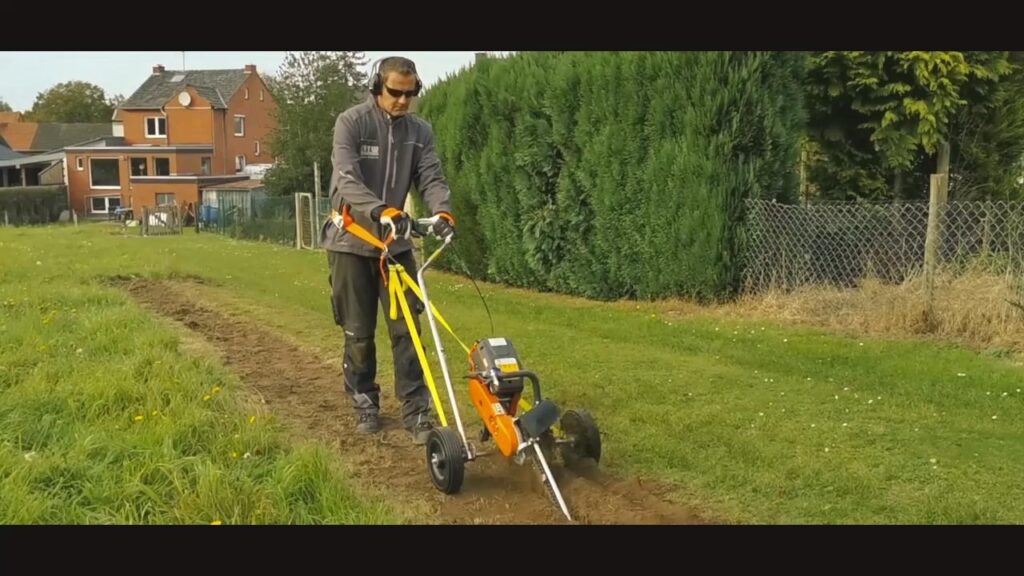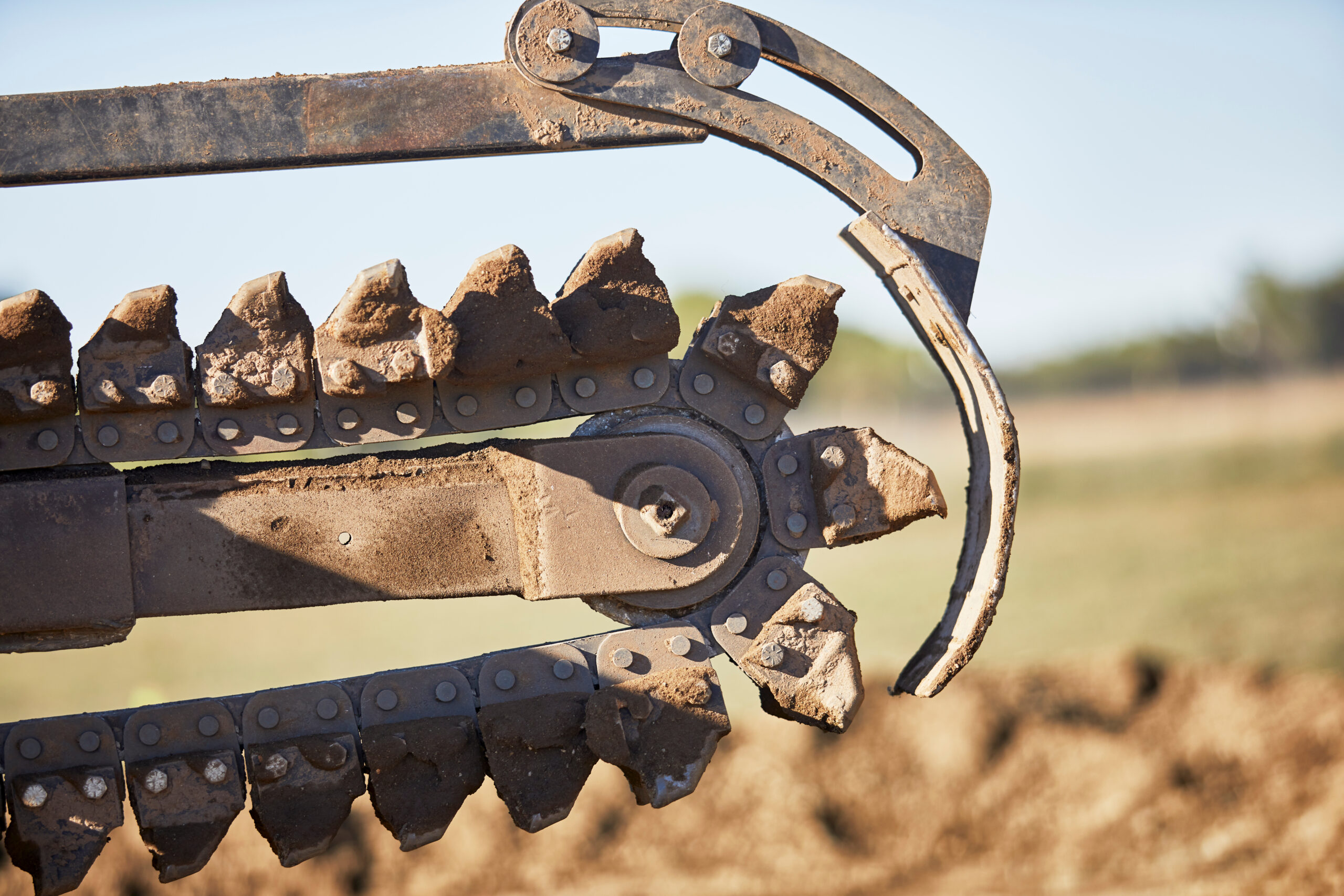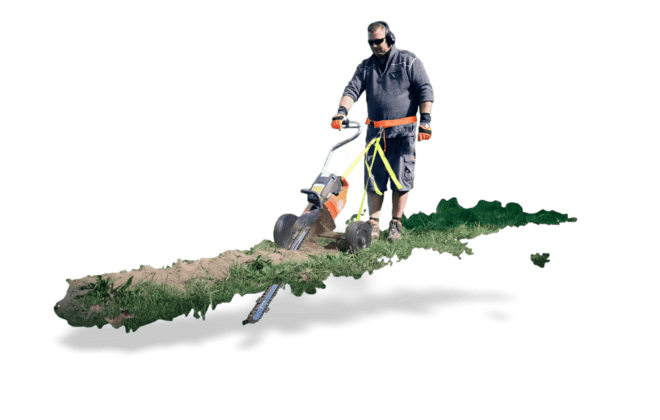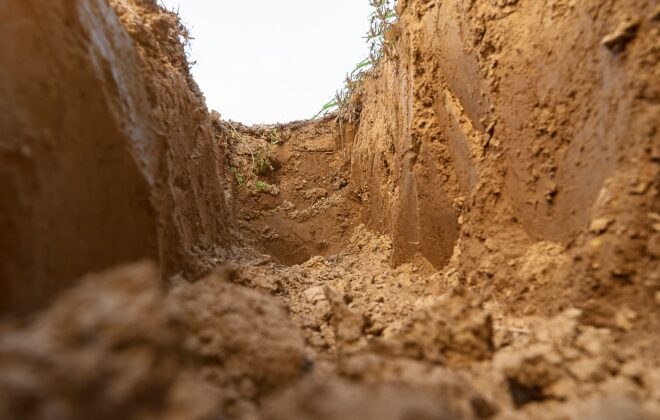Trenching Hazards: Risks and Safety Measures

What are the Hazards of Trenching?
Collapse of the sides of the trenches
Before digging any trench, pit, or tunnel, prioritise planning for temporary support. Ensure the necessary equipment—like trench sheets, props, or baulks—is on-site before commencing work. Consider ‘battering’ the trench sides to a safe angle of repose, especially in granular soils. For such soils, the slope angle should be less than the natural angle of repose. In wet ground, a flatter slope becomes imperative. This proactive approach significantly enhances trenching safety, mitigating the risk of collapses. Remember, pre-planning support and adjusting slopes accordingly are crucial steps toward a safer trenching environment.
Materials falling onto the people working in the trenches
Loose materials atop spoil heaps pose a risk of falling into the trenches. To prevent this, implement edge protection like toe boards, trench sheets, or box sides. These measures shield against falling materials, emphasising the necessity of wearing head protection. Additionally, avoid parking plants and vehicles near trench edges. Their extra loadings heighten the risk of collapse. By maintaining distance between equipment and trenching sides, the potential for collapses due to added pressure is significantly reduced, ensuring a safer environment for all involved.
People and vehicles falling into the trenches
Safeguard trenching edges from potential falls by installing robust barriers. Consider employing guard rails and toe boards placed adjacent to the supported trenching sides. Alternatively, utilise fabricated guard rail assemblies or extend the support system, such as trench box extensions or longer trench sheets. These measures create a protective boundary, significantly reducing the risk of individuals accidentally falling into the trenching. Prioritising these safety precautions ensures a secure environment, mitigating the possibility of accidents and fostering a safer workspace for everyone involved.
The undermining of nearby structures, causing their collapse
Avoid trenchies compromising scaffold footings, buried services, or nearby building and wall foundations. Even small trenches can undermine shallow foundations like those in garden or boundary walls, risking collapse onto workers in the trench. Assess the need for additional structural support before commencing any digging. Consider surveys of foundations and consult a structural engineer for guidance. This pre-emptive approach ensures the protection of surrounding structures, minimising the risk of accidents due to compromised foundations and creating a safer work environment for those involved in trenching activities.
Trench Protection

Protective measures around excavations are vital for employee safety, mandated by HSE. Consider these examples:
- Structural Ramps — Built under competent design, these aid employee and equipment movement around excavations.
- High-Visibility Gear — Employees near excavations, exposed to public traffic, must don high-visibility vests or similar reflective attire.
- Warning Signs — Operators with limited visibility of excavation edges need clear warning signs like barricades for proximity indication.
- Atmospheric Testing — Prior testing of atmospheric conditions in and around excavations ensures employee safety before site work begins.
- Emergency Equipment — Equipment like stretchers and harnesses should be available on-site for immediate emergency response.
- Regular Inspections — Daily inspections by competent personnel reinforce safety measures, catching and addressing potential issues before shifts commence. These inspections significantly bolster excavation safety for employees.
Personal Protective Equipment (PPE)
Personal Protective Equipment (PPE) serves as a frontline defence at excavation sites. Essential gear includes hard hats to shield against falling objects, sturdy gloves guarding hands from abrasions, and durable boots providing foot protection. High-visibility vests ensure visibility in high-traffic areas, while respirators shield against hazardous fumes or dust. Safety goggles safeguard eyes from debris, while earplugs or earmuffs protect against excessive noise. Properly worn PPE significantly reduces injury risks, enhancing worker safety amidst excavation activities. Prioritising and wearing the appropriate PPE is crucial for safeguarding against potential hazards in this challenging work environment.
If you have more questions
Visit our site for more information, or alternatively, you can go straight to our UK shop to start browsing.




